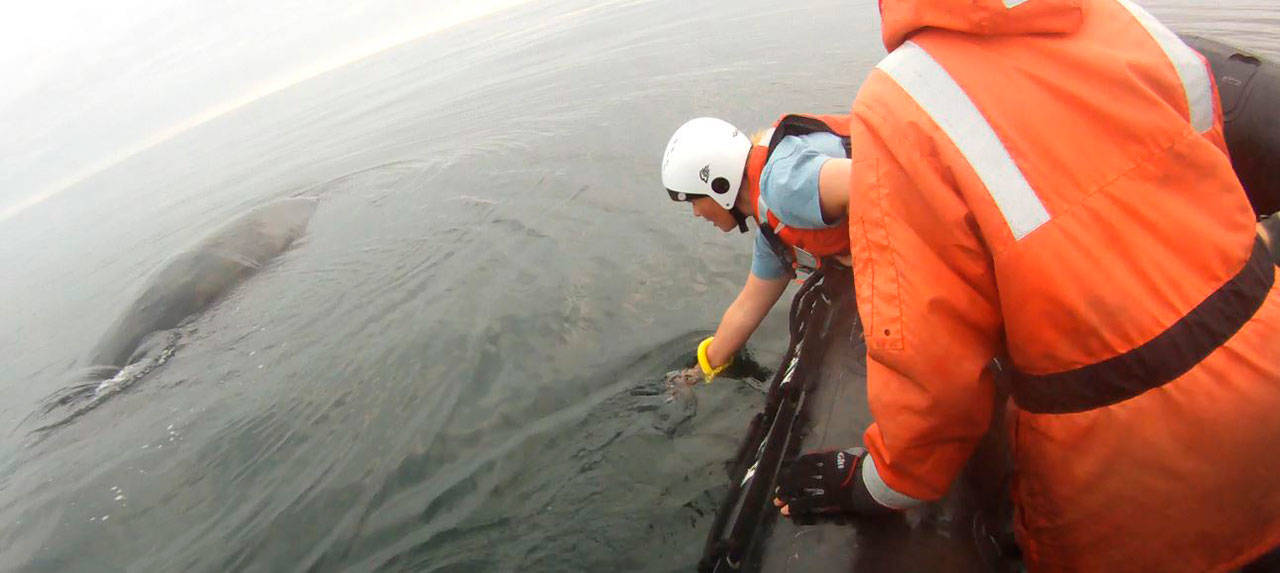TATOOSH ISLAND — A trained team recently freed an entangled humpback whale near Tatoosh Island, removing ropes that had hog-tied the whale between its mouth and tail.
The entangled whale off the tip of the Olympic Peninsula was first reported just before noon last Thursday by Todd’s Extreme Fishing, which stayed with the whale to monitor its location until the Makah Tribe and U.S. Coast Guard arrived to take over the watch.
By staying, Todd’s Extreme Fishing assisted in keeping track of the whale’s condition and location while a response team mobilized and arrived on the scene, according to a NOAA Fisheries press release.
“They did exactly the right thing by keeping their distance and watching the whale so the team could quickly find it,” said Kristin Wilkinson, regional coordinator of NOAA Fisheries’ Pacific Northwest Large Whale Entanglement Response Network.
The response team included members from SR3: Sealife Response, Rehabilitation, and Research; Cascadia Research Collective; the Makah Tribe; the state Department of Fish and Wildlife; and World Vets. Response teams must complete extensive training and work under a NOAA Fisheries permit because disentangling large whales can be difficult and dangerous, the press release stated.
Untangling the whale was complicated because ropes running between its mouth and tail had left it hogtied at the surface, said Doug Sandilands of SR3, which helped lead the response.
It was unclear whether the ropes had been attached to a crab trap or other fishing gear.
The team cut the ropes at key points to remove almost all the line except for a small section that remained in the whale’s mouth. This section is likely to fall out on its own.
The whale appeared to be in good condition and was swimming normally after the team removed the ropes on Thursday night, according to a press release.
Anyone who spots an entangled whale should report it to NOAA Fisheries’ 24/7 hotline by calling 877-767-9425 or hailing the U.S. Coast Guard on VHF Channel 16.
Reporting parties are asked to stay with the whale as long as it is safe to do so, but to never attempt disentanglement or removing any gear without training and authorization.
Reporting parties also are asked to try to get video or photos showing the entangling gear but to stay 100 yards from the whale and to watch for lines in the water.

